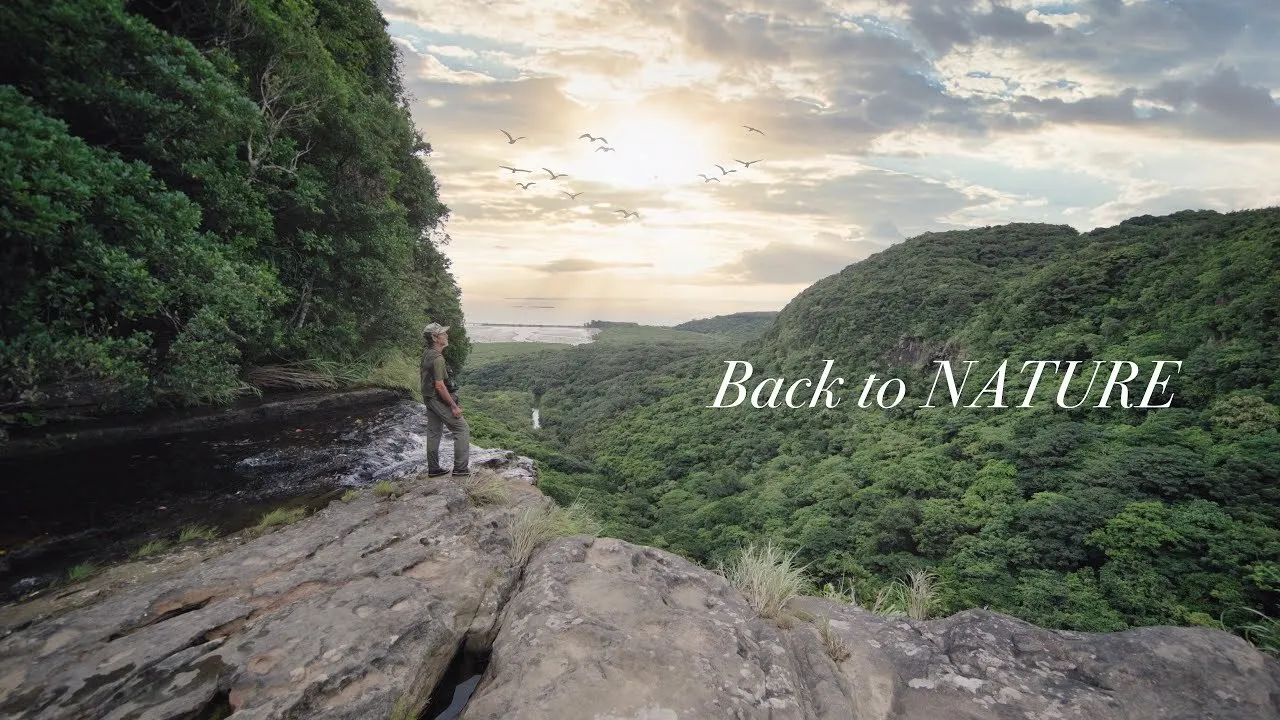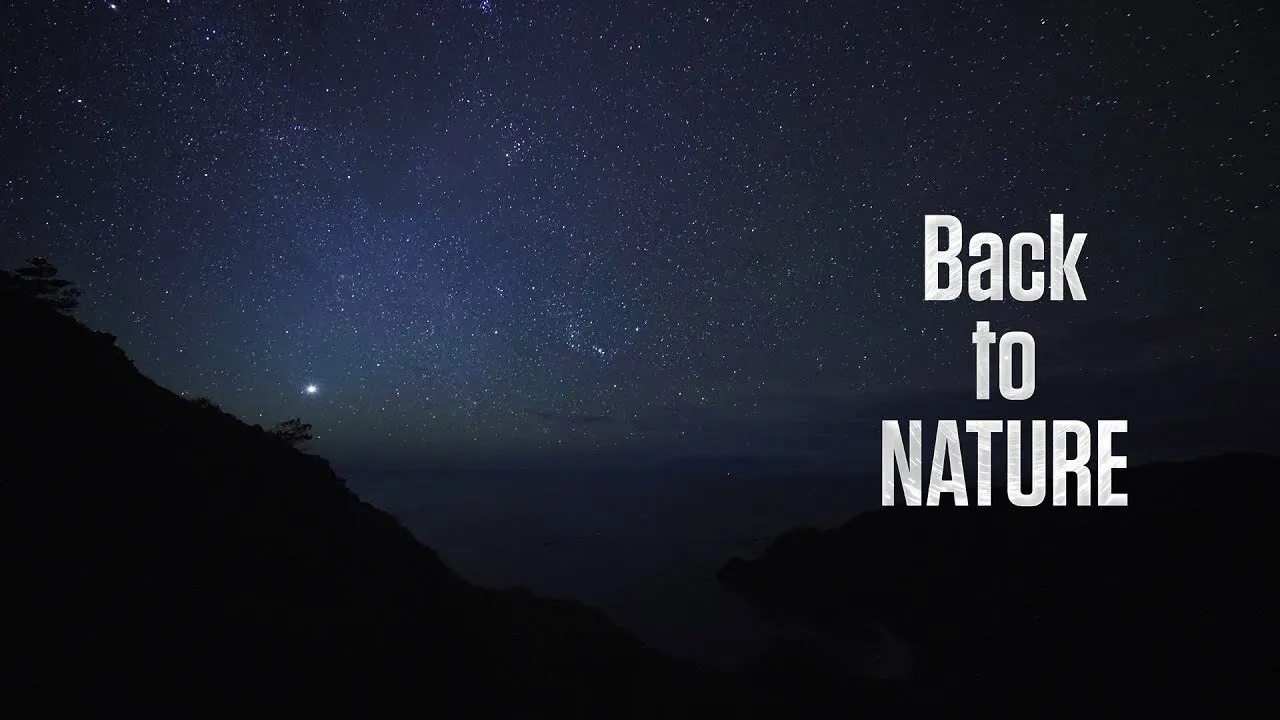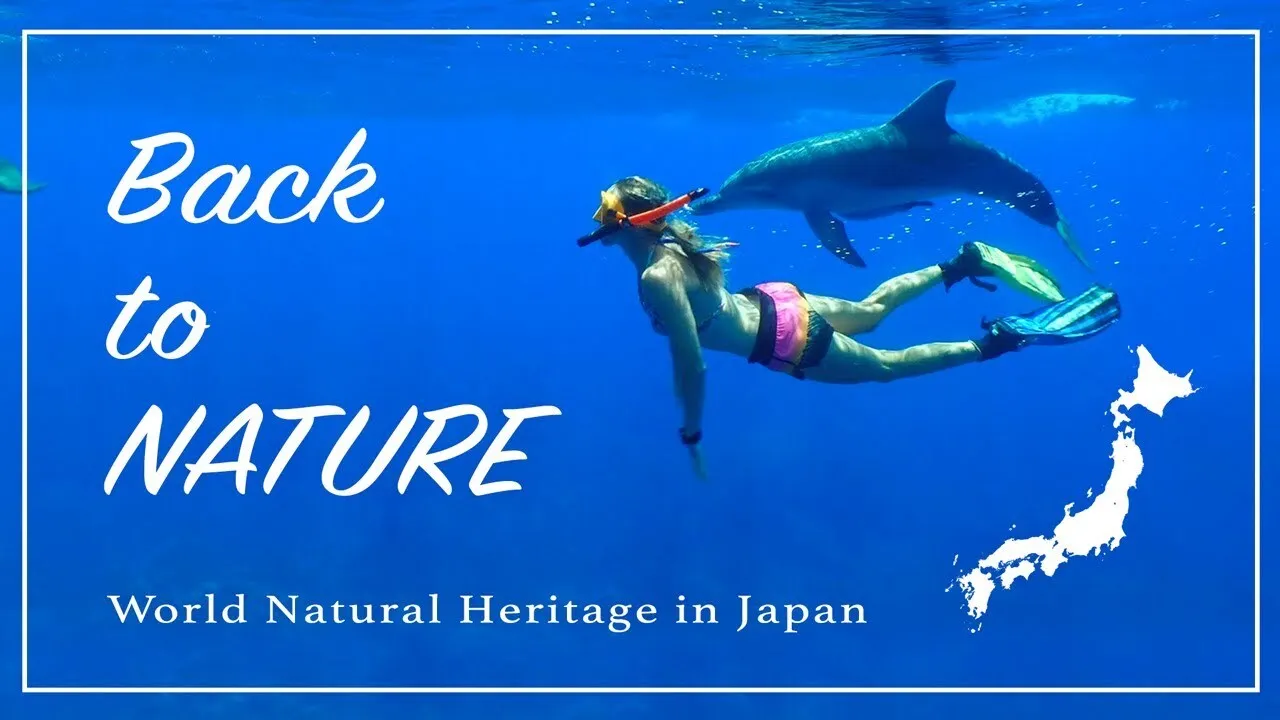Back to NATURE
Contemplating sustainable relationships with people who live hand-in-hand with nature
World Natural Heritage sites are a gift we hand down to the next generation. In Japan’s five World Natural Heritage areas, generation upon generation of people have lived their lives alongside these rare and rich natural environments.
Journey to one of these sites, and you’ll not only be reminded of how wonderful our priceless nature is, you’ll also get a sense of the special relationship formed between nature and humanity over our history.
As we hear the stories shared by people who live in harmony with nature in these World Natural Heritage sites, we can search for hints on how to construct our relationships with nature looking ahead to the next generation.
Ogasawara Islands
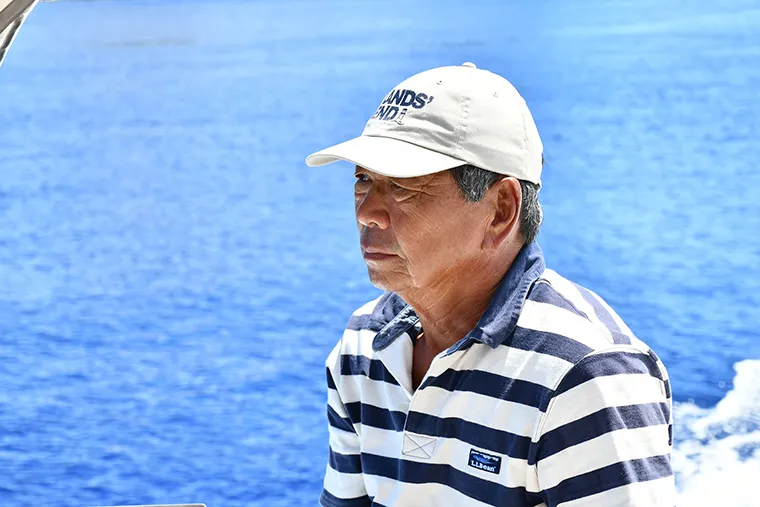
Dive Shop Owner Shoubu Yamada
In 2020 version
Yamada is the owner of Kaizin, a diving shop in Ogasawara, and director of BOISS (Bonin Oceanic Island Studies Society), a non-profit organization specializing in environmental conservation initiatives.
He moved to Ogasawara around 40 years ago after falling in love with its oceans and nature, and holds various licenses including an instructor’s qualification from the Japan Professional Scuba Diving Instructors Association, a Tokyo Nature Guide license, and a First-class Small Vessel Operators Proficiency license. A veteran guide who has free-dived almost all of the waters around Ogasawara—discovering many diving spots in the process—Yamada is a treasure trove of knowledge about Ogasawara’s nature and oceans.
Protecting nature from change as we sense its life force
Being a diver, I've dived in oceans all over, but Ogasawara's waters are my favorite, and 40 years ago I moved here to make it my home.
Despite decades of diving in these waters, I still constantly make new discoveries, just like I did when I first arrived. For me, that's the ultimate charm of Ogasawara's waters.
That and the fact that despite Ogasawara Islands being located in the warmer southern waters, we can see different nature and living creatures from season to season. This enjoyment just adds to Ogasawara’s charm.
Living amidst the rich natural environment of these islands on a day-to-day basis, I can sense for myself that nature is breathing. This makes me want to experience the life force of nature to a greater degree.
If we can protect these bountiful waters to prevent them from changing, I’m sure our grandchildren will also fall in love with the ocean.
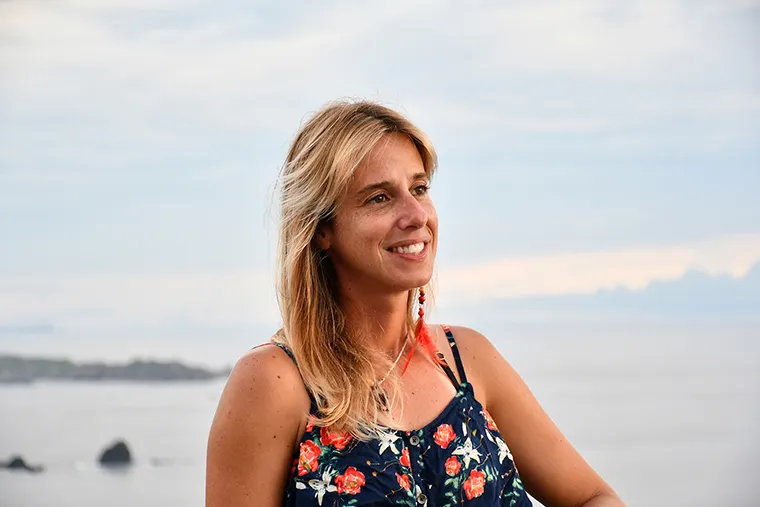
Traveler & Diving Instructor Andrea Ramos
In 2020 version
Ramos is a diving instructor from Brazil who runs a dive shop in Okinawa. She has dived all over world in places like Brazil, Curaçao, Mexico, the Philippines, Australia, and Thailand, and in 2018 she won an elite instructor's award from PADI, the world’s leading diving instructor training organization. Also an environmental technologist, she is passionate about diving as a means of experiencing nature and marine life, and bringing joy to others.
Enchanted by people’s respect for nature and the unfettered animal life
This was the first time I'd ever visited the Ogasawara Islands, and I was blown away. The magnificent natural environment is really well preserved, and the ocean is very healthy too.
Seeing Ogasawara’s dolphins are living freely in the ocean and that was something truly special. Meeting dolphins almost every day, and swimming next to them was a new experience for me. I think it was the kind of scene many people dream of.
In Ogasawara, it was clear that the locals treat the islands with care, and that everyone respects nature. This is no doubt why we can see so many living creatures—not only in the ocean but on land as well. These islands were truly more wonderful than I ever dreamed possible. They've stolen my heart.
Shiretoko
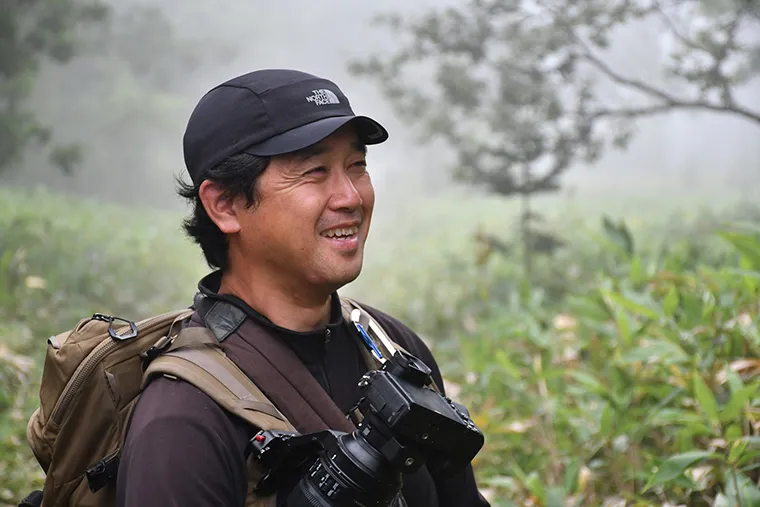
Nature Photographer Naoya Yagi
In 2020, 2022 version
Yagi is a nature photographer based in Shiretoko's Utoro area, who photographs the nature and living creatures on his doorstep, while also working as a nature guide. Currently his work is themed around the intrinsic relationship between nature and humanity in Hokkaido. In 2016 he took second place in the professional division of the 3rd Sumitomo Real Estate Sales Step Photo Contest. He has also had his photographs published serially in special edition in-flight magazines, local magazines, and fishing magazines.
First, we consider the animals and nature. When we do this it naturally sets the course of our behavior.
The Shiretoko Peninsula is a long, narrow strip that sits in close proximity to steep mountains and the ocean. This is why it’s easy to see animals’ lifestyles and changes in the sky. For example, in the swift currents that flow through the narrow peninsula, we can watch as pink and masu salmon swim upriver to lay their eggs right before our eyes.
In Shiretoko, there is little distance between nature and humankind, and the animals seem somehow human-like. When I’m taking photographs here, one thing I’m careful about is not disturbing the animals’ way of life. My first consideration is not people, but animals. My behavior flows naturally from this way of thinking. I believe that the relationship between humanity and nature, built from countless random chances, can be seen here in Shiretoko.
Shirakami-Sanchi
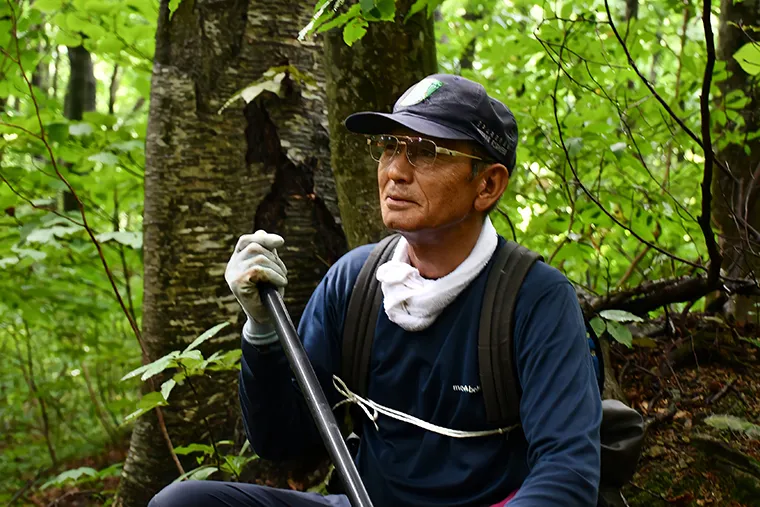
Matagi, traditional hunters Ishikatsu Ohtani
In 2020, 2022 version
Otani was born in Akaishi Matagi Village, a well-known Matagi village in the Shirakami-Sanchi. Matagi is the name given to a group of people with a unique culture and set of techniques, who hunt bears and other large game for a living. Otani is the second son of a Matagi chief who spent many long years earning a living as a Matagi, and he now communicates the Matagi code of living that he learned from his father to the present generation.
A life of gratitude to the mountain gods and partaking in nature’s bounty.
My father lived his entire life as a Matagi (traditional hunter), and so I spent my childhood with him, walking the mountains and living on the bounty provided by nature.
These days I trek through these vast mountains on my own feet, exercising all my five senses to the utmost, and receiving nature’s blessings from the mountain gods—not only game, but all kinds of gifts from nature, including edible wild plants, fresh-water fish, and mushrooms. My habit of saying a few words of gratitude to the gods of the mountain when I first enter is one of the many things I learned from my father. The water that wells up in the beechwood forests is clear almost all year round, and for me there is nothing more special. These trees are wonderful.
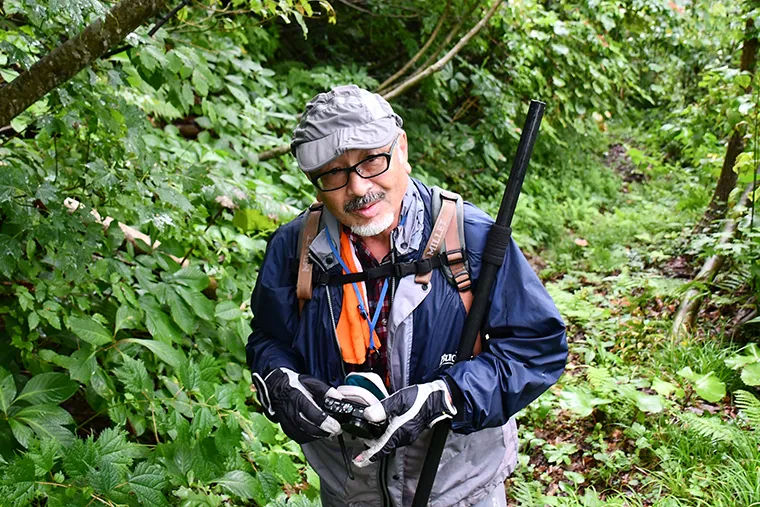
Shirakami Mountain Preservation Society (SMPS) Katsuto Nagai
In 2020 version
Nagai is the representative director of the non-profit organization, Shirakami Mountain Preservation Society (SMPS). He also serves as the representative director of the non-profit organization, Shirakami Nature School, and the chairman of the Ajigasawa Shirakami Green Tourism association. In addition to organizing nature conservation initiatives such as vegetation research studies and beech forest regeneration activities, Nagai is also active in the field of environmental education, opening the Shirakami Nature School (non-profit) in an abandoned school in Ajigasawa Town in 2003. His dynamic initiatives are designed to preserve the Shirakami-Sanchi for future generations of young people and children.
Thinking of the environment for the next generation and planting beech trees that will not grow to maturity in his lifetime.
Those who make their home here in the Shirakami-Sanchi have always lived hand-in-hand with nature. When we pick edible wild plants from the mountains, we don't pull them out from the roots. Instead, we use a small knife to cut off the part above ground, leaving nature do its work on the roots.
It’s the same with beech trees. Beeches only produce seeds once every three or four years, and one of our initiatives is collecting those seeds and raising seedlings in our villages which we later return to the mountain.
They say it takes around 50 years for a beech tree to bloom, and around 80 years for one to produce fruit. If we grow beech trees from seedlings, we will not live to see them grown to maturity. All we can do is imagine what they will look like when they are fully grown. Still, we are certain that we are leaving behind a better natural environment for the next generation.
Yakushima
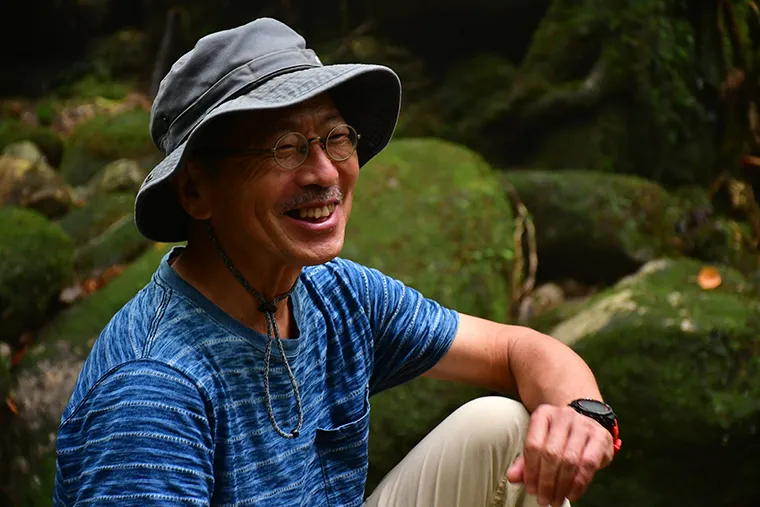
Nature Guide Akio Manatsu
In 2020, 2022 version
Manatsu is director of Nature Guide Office Manatsu. He began his career working in design in Tokyo, before moving to Yakushima in 1978, and establishing Manatsu Office in 1997. The tours are created around the concepts of “ecology & spirituality,” and the company offers eco tours that approach Yakushima’s nature from a natural science perspective, and spiritual tours for experiencing the world that is not visible to us.
Humanity lives side-by-side with untrammeled nature
The Kuroshio (or Black) Current flows close by the shores of Yakushima, surrounding it in warm ocean water. Water vapor rising up from this warm ocean is cooled in the skies and falls on the island as rain almost daily. I believe that this rain has a strong impact on Yakushima’s nature.
Untrammeled nature like Yakushima’s primeval forests is something I find incredibly appealing. Every day I’m reminded that the natural environment is also made up of elements invisible to us, and I sense that the question of how humanity can best keep company with this nature, or what kind of stance we should take, is something nature is teaching me.
Unfortunately, you and I cannot live out our lives in virgin forest. We can only live side-by-side with nature in its wild state, and utilize it throughout our lifetimes. But we must be absolutely clear that we are not living under our own power alone. I’m aware that we need to live in harmony with nature.
Iriomote Island
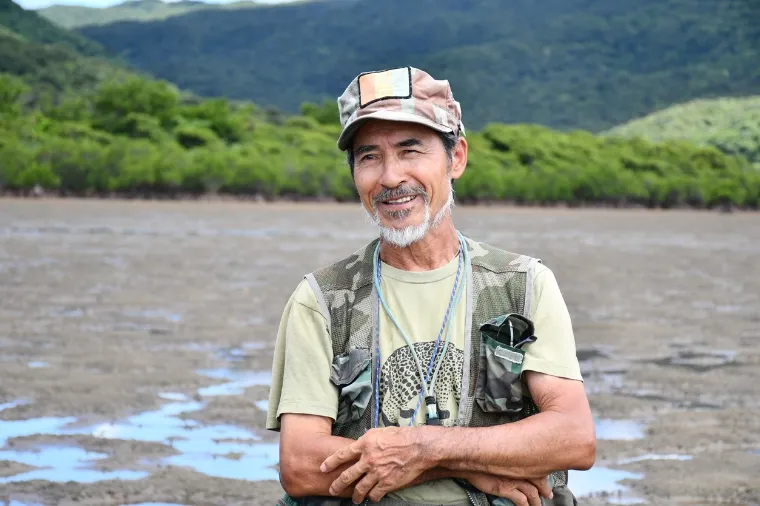
Nature Guide Takafusa Morimoto
In 2022 version
Represents Banana House, Iriomote Island. Born in Taishi-cho, Hyogo Prefecture. Moved to Iriomote Island aged 21. As the leading eco-tour operator on Iriomote, he constantly receives requests for reports and field surveys from media and researchers. He puts people in touch with Iriomote and conveys the experience he has gained from having observed Iriomote’s natural world for nearly 40 years, through hands-on experiences like nature interpretation and tour guiding.
It’s a treasure island that puts you in touch with the animal and plant life and the interconnections in nature
Iriomote’s forests provide blessings that filter down from the forests through the animals and plants who inhabit the mangroves and tidal flats then reach the sea to provide nourishment for the marine animal and plant life. The lives of the animals and plants of Iriomote are mutually interconnected and those interconnections are clear to see here on Iriomote, which makes it a real treasure island.
Since ancient times, our ancestors have protected the forests for the sake of living on this island, they have lived interdependently with nature, have been grateful for it, and have cared for it. How do we carry on that spirit and preserve the island for future generations as a better place for its animals and plants to live? I am committed to my work spreading that message.
Tokunoshima Island
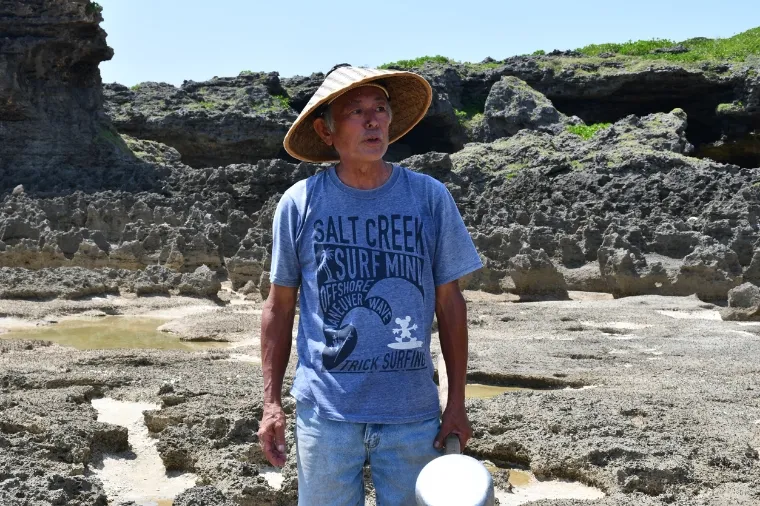
Artisan Salt Maker Ryutaro Mizumoto
In 2022 version
Runs Mashuya in the settlement of Nishi-inutabu, near Cape Inutabu. He is committed to preserving the traditions of Tokunoshima Island and is the enthusiastic operator of hands-on salt-making tours for visitors. His younger sister Ikuyo Matsuoka runs Yaduri, where she serves island cooking made with the salt her older brother makes, skillfully incorporating that salt into dishes that feature local produce.
I’m committed to producing exciting umami flavors that highlight natural ingredients
I get excited when I start making salt in summer. When I heat up the seawater and it boils, there’s no smell like it.
It’s a bit like stewed fish. There are small fish in the seawater ponds on the tidal rock shelfs along the shore, and when you evaporate the seawater, the fish boil down, which produces something like a dried anchovy stock.
The reason I am still making salt in this traditional way is that my parents used to make salt, I don’t want it to die out, and travelers visit and say “It tastes really good,” so of course I’m a firm believer in this salt making tradition. It’s a tradition that makes use of natural ingredients. It’s just great.
Amami Oshima Island
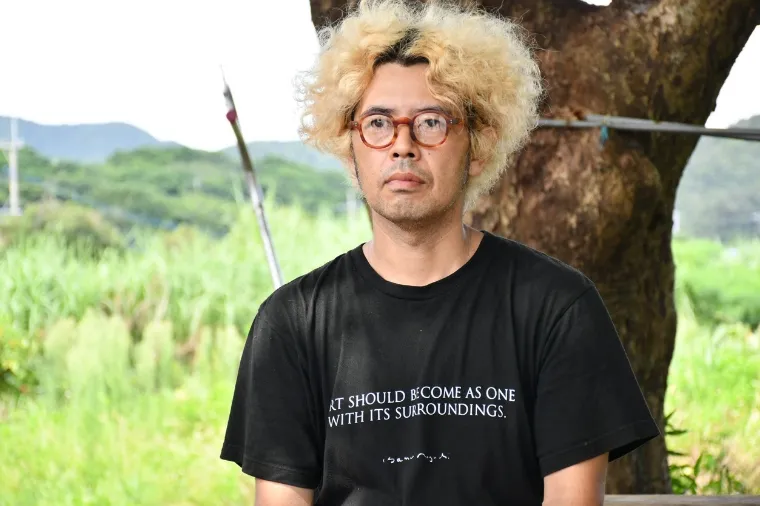
Dyer Yukihito Kanai
In 2022 version
2nd-generation head of Kanai Kougei (Kanai Crafts), natural dyeworks in Tatsugo-cho, northern Amami Oshima Island. Does traditional natural dyeing, especially mud dyeing Oshima tsumugi silk pongee. Adheres to traditional techniques while also collaborating with apparel makers to create new value from natural dyes. As well as being a craftsman, he is also a successful artist.
I have inherited wisdom cultivated from adapting within nature
From the time I was a kid I had fun and helped out in the dyeworks my dad started, and what most intrigued me was that there were colors you couldn’t achieve without natural ingredients, and that you go to the forest to gather dye materials too.
Mud dyeing carries with it a whole lot of knowledge about nature that has been cultivated on this island, so I get the strong sense that I am carrying on something that came into existence through the knowledge of my ancestors who have been making their livelihoods here till today, the natural environment that keeps that alive, and the relationship between them.
Humans have no choice but to go on living within nature, and our work too exists only within it. It goes without saying, but it seems to me that we can also learn from nature that we are here exactly because we adapt to it.
The northern part of Okinawa Island
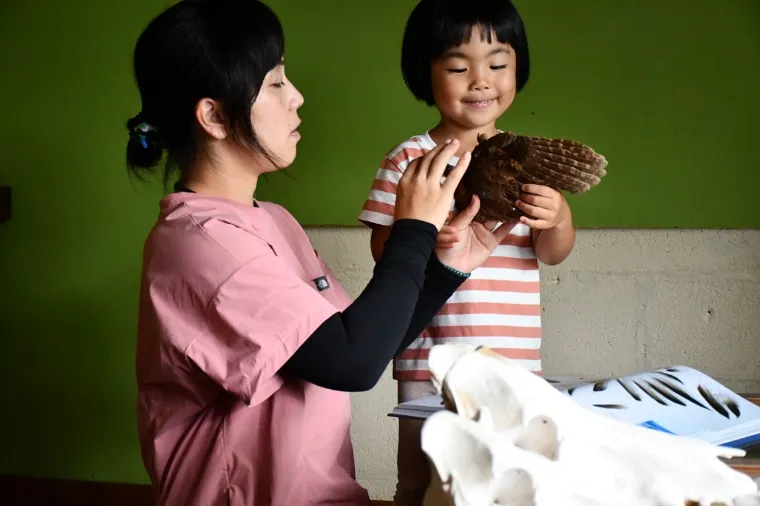
Nature Guide Natsuko Kudaka
In 2022 version
Represents Yambaru Green, in Kunigami Village, in the The northern part of Okinawa Island. She works to conserve for future generations the beauty of the forests of Yambaru (the mountainous areas of Kunigami), which she has come to know and love since her early childhood. Part of her work includes running Chiisana Nature Center (“The Little Nature Center”) where the local children can learn about the natural environment in Yambaru, she regularly does biological surveys, and spends a lot of time closely monitoring the state of Yambaru’s forest and how the animal and plant life are faring.
The best thing is when the kids realize how great their local natural environment is
There aren’t many signs of humans in the forests of Yambaru. It feels as though the forests belong to the animals and plants. It’s just amazing to be able to discover interconnections between the lifeforms in these forests each time I go.
Since I can first remember, spending time in the forests of Yambaru has been a natural part of my life, and I remember that coming into contact with nature, the animals, and plants was incredibly enjoyable. I want these forests to be preserved forever, so I thought about what I could do towards that and started doing biological surveys and guided tours. I teach kids about how interesting and amazing this natural environment is, and how to have fun in nature. The best thing is when the kids realize that where they were born and have grown up is a great place.
Hahajima(Ogasawara Islands)
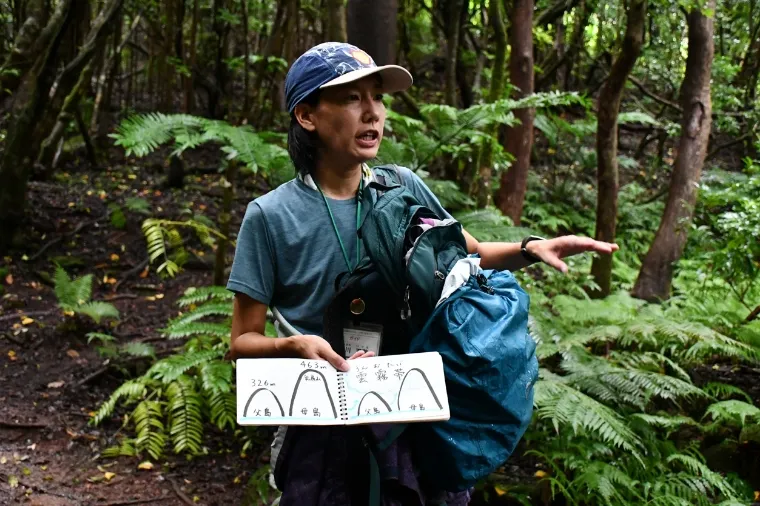
Nature Guide Itsuha Miyagawa
In 2022 version
Runs Irie Isle tours as a nature guide on Hahajima, Ogasawara Village. Born in Fukuoka, she lived in places where nature abounds, on the Okinawa main island, Ishigaki Island, and Okutama (Tokyo) before moving to Hahajima more than 10 years ago. Does Ogasawara nature conservation work as a Tokyo Metropolitan Ranger on Hahajima, and feeds the knowledge she gains through that work into her work as a nature guide, telling tourists about the fascinating things deep in the forests of Hahajima.
When you live with the natural environment on this island, you get the unmediated feeling that you’re where you belong as a living being
Hahajima is an oceanic island, originally a volcano that formed in the middle of the ocean, so at first nothing lived here. For the animal and plant life that happen by chance to arrive on this island, it is a paradise with no natural enemies and no competition, so they all live in peace, making for a unique ecological system. One such animal is a transparent snail that is so transparent you can see its heart.
Living on this island I get the incredibly strong sense that I exist as one living being amid the rhythms of nature, the ebbing and flowing of the tides, the waxing and waning of the moon. When you’re in the natural environment here, you get the unmediated feeling that you really are just a tiny part of nature, or perhaps, you’re where you belong.
Sustainable relationships are only truly realized when they are carried on by the next generation
The people featured here benefit greatly from nature, and at the same time design their lives in a way that reduces their impact on the environment. Characteristics shared by those who live in Japan’s world heritage areas are feelings of awe and gratitude toward nature, and the way they build sustainability into their relationships with it.
We owe the continuing existence of this valuable natural heritage to the fact that these shared characteristics have been handed down from ancestors many generations ago.
So, what can we, as visitors to World Natural Heritage sites, do? Perhaps our task is to simply experience the joy of being in untrammeled nature, and for each of us to undertake preserving it and handing it down to the next generation. How about setting forth on a journey to discover what shape our own indispensable sustainable connection will take?
